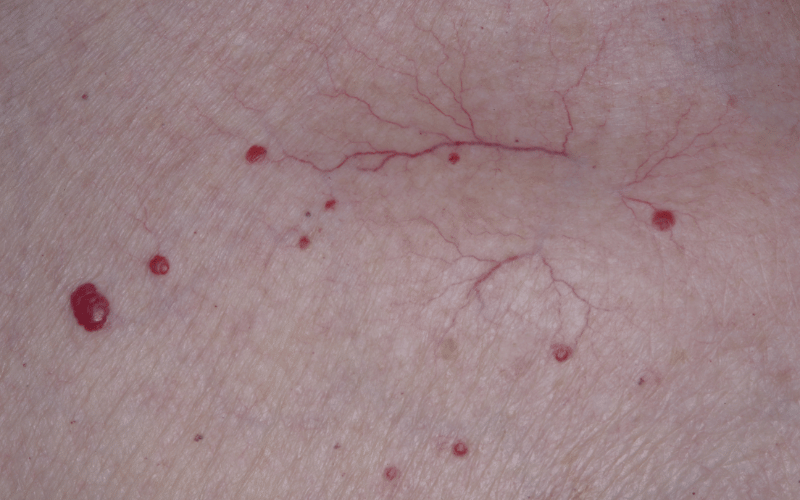6. Spider Angiomas: The Vascular Markers of Liver Disease

Spider angiomas, or spider telangiectasias as they are sometimes called, are characterized by central red spots from which small blood vessels radiate, giving them a spider-like appearance. Found predominantly on the face, neck, and upper torso, these small, web-like patterns often raise concerns due to their sudden appearance. While generally not painful, their association with liver disease makes them a symptom worth noting.
The appearance of spider angiomas has been linked to elevated estrogen levels in the body. A healthy liver efficiently metabolizes this hormone. However, a cirrhotic liver falters in this task. The accumulated estrogen then prompts the dilation of the small blood vessels, leading to the formation of these distinctive patterns on the skin. As they increase in number, their presence can become a significant indicator of liver disease progression.
While one or two spider angiomas might not be cause for alarm (they can occur for various reasons, including hormonal changes during pregnancy), the development of multiple spider angiomas might be a stronger indication of liver disease. Their sudden proliferation, especially when accompanied by other symptoms of cirrhosis, should be taken as a cue for a thorough medical check-up.
Though spider angiomas in themselves are harmless, they can be a cosmetic concern for many. Various treatments, including laser therapy, can be employed for removal. However, addressing the underlying liver condition remains paramount. Without managing the root cause, new spider angiomas may continue to form. (6)